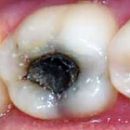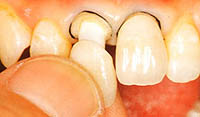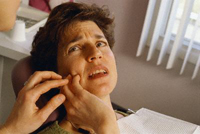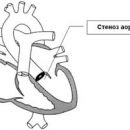What is Pulpitis? What are the symptoms of poat? What are the complications of the pulpitte? How the pulpitis is treated? Answers to these questions you will find in the article.
Content
Pulpitis, symptoms of pulpit
Pulpitis is usually called «Inflammation of the nerve», But this is not a very precise definition. It is he who is the culprit of those the most terrible dental pains and sleepless nights, which, unfortunately, were in the life of almost every person.
Treatment of pulpitis - this canal filling (endodontic treatment). What is hiding under this concept? What will happen then with a tooth without nerve? How to protect him? You can get answers to these questions now.
Pulpitis is the inflammation of the whole vascular-nerve beam that feeds the tooth, which is called the pulp and is located in a special pulp chamber inside the tooth.
By flow, the pulpitis is acute and chronic. The main reason for the occurrence of the pulp is the inadequate caries in time. When a thin layer of fabric remains between the carious cavity and the pulp chamber, the poisoning substances secreted by microbes penetrate through it to the nerve and vessels and cause inflammation. Then there is a direct message between the cavity and the camera and the pulpit is enhanced. There are pulbs caused by poisoning (toxic) action of sealing material («Chemical» seals) in the absence of insulating gasket or its incomplete overlay. Pulpitis can be caused by a tooth injury, which is often found in athletes and dracans.
A sharp pulp is manifested by sharp «Sterifying» pain in the affected tooth, which usually appear or amplified at night. The attacks arise by themselves, but pain can appear or increase from a sharp drop of food temperature or inhaled air. It is often difficult to understand what kind of tooth is amazed – Half of the jaw and even sex.
Chronic Pulpitis meets quite often. He manifests itself unclear thank pain or generally proceeds, but gives the same complications as acute.
Possible complications of Pulita
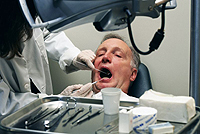 Periodontitis - inflammation of the ligament apparatus of the tooth. The most frequent complication of the launched pulpita or its unscrupulous treatment. Under «unfair treatment» It is understood to fill the channels with the removal of the material for the top of the tooth or, worse, non-emptiness with emptiness.
Periodontitis - inflammation of the ligament apparatus of the tooth. The most frequent complication of the launched pulpita or its unscrupulous treatment. Under «unfair treatment» It is understood to fill the channels with the removal of the material for the top of the tooth or, worse, non-emptiness with emptiness.
If anesthesia has been deployed after treatment and you feel pain - the tooth rotes or cognizate to it on it, but the pain does not enhance and gradually subsides, then this is the norm - the body's reaction to the invasion and treatment. If the pain is enhanced, especially at night, becomes pulsating, then it's urgently run to the tool - somewhere there was a piece of inflamed nerve and makes itself felt.
It happens that the thin dental tool breaks directly in the channel of the tooth, no one is insured from it. The doctor, of course, will make every effort to get it, but if it is impossible, then it must be necessary to pass the channel of the tooth next to the instrument and grasp the top of the top, then inflammatory complications will not arise.
It happens that with the careless movement of the doctor, with the unusual arrangement of the roots of the tooth or if other factors have a perforation of the bottom of the cavity or canal - an artificial hole. In itself it is not dangerous, but can lead to inflammation, so the doctor must competently «clap». Well, if you are offered to make a tab from a biocompatible material to this tooth, such as gold. Can designate physiotherapy procedures.
Natural complication of the depugting of the tooth (nerve removal) is the darkening of the tooth over time and its fragility. Everything is easy to explain: the tooth remained dead, without food, tissue wear out, but not restored. Your way out - make a crown for aesthetics and strengthening tooth.
The most common and justifying method for the treatment of acute pulpitis (endodontic treatment, endodontics) is the removal of the nerve (pulp) under the anesthesia, followed by the sealing channels of the tooth Guttairech. Channels are thin continuation of the camera in which the pulp is located, they also contain nerves and vessels that need to be removed. At first, the doctor removes the entire pulp from the tooth, then rins the channels with strong antiseptics (disinfecting solutions), expands with special tools, drying and leaves a medicine for several days, or immediately seals the channels with special guttaper pins with paste.
After that, the X-ray is immediately made, because the main task of the doctor is to close the channels tightly until the top of the tooth, without leaving any voids.
Of course, there are special devices to help determine the top of the tooth (apekslockators), but they can be wrong, and your health is not a joke, so the control picture is done necessarily.
After sealing the channels, you will put a temporary seal and let go home so that the paste is frozen, and the next visit will be solved in any way to restore the tooth.
There are other methods of treating pulpits: the method of complete storage of pulp (biological) and method of partial storage of pulp (vital amputation), but there are many contraindications for their application.
For a positive result, a favorable confluence of many circumstances and absolute sterility, which is to achieve in the mouth, and even when inflammation, which is caused by microbes is very difficult. Therefore, complications with such treatment arise much more.

